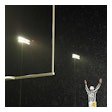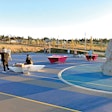"Cooperative coordination" leads to fair field-use schedules

Having a basic understanding of, and a sensitivity to, non-profit volunteer organizations and their needs is a critical component in field-use scheduling. First, it's important to note that each organization is made up of a huge number of volunteers. There are an average of 10 governing board members and 10 umpires for each. Additionally, each team has its own roster of approximately 13 players, along with an average of five managers, coaches, scorekeepers and oftentimes chaperones. In the city of Mission Viejo, Calif., for example, there are 30 major sports organizations with a total of approximately 1,000 teams. This adds up to 5,600 volunteer adults working for the benefit of 13,000 kids.
Most of these volunteers, many of whom are parents, are involved in more than one activity, and most also hold a full-time job. This means volunteer organizations are working outside of normal business hours - the hours government bodies, which can include parks and recreation, operate. Government agencies do provide on-call, after-hours staff, but this is only of value to the organizations if that staff can communicate, make decisions and act independently, without having to wait until the next day or the following Monday to contact another person or persons. Problems relating to recreational sports usually require immediate resolution.
This immediacy or "now" attitude applies to other volunteer activities as well, including fund-raisers, team meetings, practices and games. When coaches, managers, scorekeepers and umpires, not to mention players and spectators, show up for a scheduled event, it needs to happen - tomorrow is unacceptable.
Because of the circumstances under which volunteer sports organizations operate, parks and recreation officials must plan for league use, recreational use and maintenance of the field facilities with respect to each user's needs. This may sound elementary, but some agencies still schedule use on a first-come, first-served basis and schedule their maintenance on a last-minute basis. Neither of these scenarios serves the public interest.
Recreational sports organizations such as Little League and AYSO have their season dates and activities dictated to them by national or regional parent organization headquarters and rule books. To ensure their field-use needs are met, dates should be scheduled well ahead of their season's start dates. These allocated field-use times must allow for more than just scheduled games. They must also take into consideration such league activities as sign-ups, tryouts, clinics, practices, opening days, make-up games and tournaments. These activities defy specific-use permits, which is often a misdirected goal of computerized scheduling systems.
Maintenance must also be planned in advance, based on the allocated use schedule. Some agencies tend to either insist on specific maintenance times, which are often at odds with the dictated league date and time-frame needs, or they wait until a field requires repair, creating an emergency shutdown of the playing areas.
The concept of developing cooperative coordination is certainly not new, but it is a proven aid to scheduling sports-field use. Established sports meccas such as Oklahoma City have long used such processes. Mission Viejo has used its group, called the Youth Athletic Coordinating Council, for 24 years. The practices of the YACC, whose motto is "Cooperation Among Adults for the Benefit of Our Youth," has been emulated by such neighboring communities as Rancho Santa Marguerita and San Juan Capistrano. The concept only works, however, if all people - both facility users and owners - agree to cooperate.
The first step in developing a cooperative is getting the facility-owning agencies - school districts, municipalities or other public or private entities - together with all of the area organizations that use the available sports fields to form a council or coordinating body. The agencies and organizations should generally meet twice a year to review the operation of the chosen council. The council should be staffed by a president, a vice president and a secretary. These can be elected or volunteered positions. The membership should consist of one representative (usually the president) from each sports organization and one representative from each of the agencies that control the facilities being used.
Of course, like all volunteer ventures, someone has to take charge. The motivation, effort and time to establish a council and coordination process can come from any individual associated with one of the sports organizations - whether that group is currently using or looking to use the fields - or from one of the facility owners or managers.
At an initial meeting of the council, the purpose of the coordinating process should be presented. In order to keep the process free from political issues, it should be made clear that the council is a coordinating body only; it has no authority. The number of meetings that will be needed each year can be decided at the outset and will be based on the number of sports seasons in your area.
The following tasks should be completed at this meeting and all subsequent meetings:
• All user groups outline their upcoming season needs. For subsequent meetings, continuing users should use the previous history data sheets, specifically noting any changes; new users submit new requests.
• Each facility manager supplies a list of his or her sports facilities, and the ground rules for scheduling and using them. Facility managers should also make their priority of use known to the council members. For instance, city functions may have priority over local youth sports, which have priority over adult sports. Any upcoming season changes that might affect a previous allocation layout, such as a high-priority city event or a maintenance shutdown interruption, must be noted.
• Supply and demand are reviewed and discussed. A fair and even allocation plan for all facilities should be agreed upon. Consideration for open public use is also built into these plans. No one should leave the meeting until all schedules are complete. Special situations should be noted and may include the need for more efficient use of allocations, the need for more open time, or the formation of a new league.
Any parties in disagreement on a specific allocation should then meet in a subgroup, which includes a staff member or advisor, as necessary. This process continues until all allocations are agreed upon to avoid problems down the road.
All allocation schedules are then transferred to a master allocation chart. The details logged on this master record are then transferred to individual permit requests as provided or stipulated by the appropriate facility advisor. The permits are initialed by council staff, gathered, and later distributed to the appropriate facility agency. The council staff then follows the permits through the individual facility agency systems to help ensure prompt and appropriate processing and approval.
These allocation plans should be modified annually or biannually, or as the needs of the organizations and agencies dictate.
Between meetings, the council staff should keep an updated list of all sports organizations and their reps, as well as all facilities and their advisors and create and maintain schedule charts for allocation discussion. From these charts, a detailed and accurate database should be maintained showing all allocations agreed to - for all agencies, for all fields, for all user groups for each season. As an advisory source, the council should be aware of all ongoing and future outdoor sports facility improvements and additions.
The council staff should also be responsible for setting up and notifying all applicable members and advisors of any and all meetings and working with the authorized facility reps to establish a clear understanding, and continuing acceptance, of the council's role in the permitted use of their facilities. By maintaining communication with these reps, they will give more consideration to the needs of each individual sports group. In turn, users will respect the needs of the facilities and the agencies that run them.
To ensure the entire coordination process runs smoothly, all members must stand behind the process and be in agreement on the resulting schedules and permits. The theory behind the council is that those who have a need, by virtue of their vested interest, can work out a more fair, logical and agreeable arrangement than any government agency or politician who is not directly involved can accomplish. By sitting down together, each organization is aware of the others' needs, and in the end, each will get their fair share of field time.
































